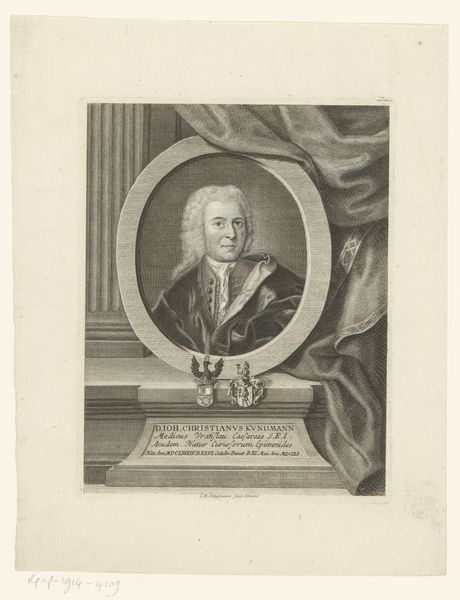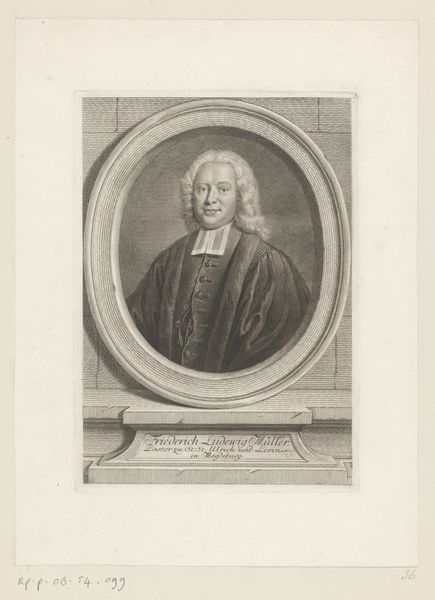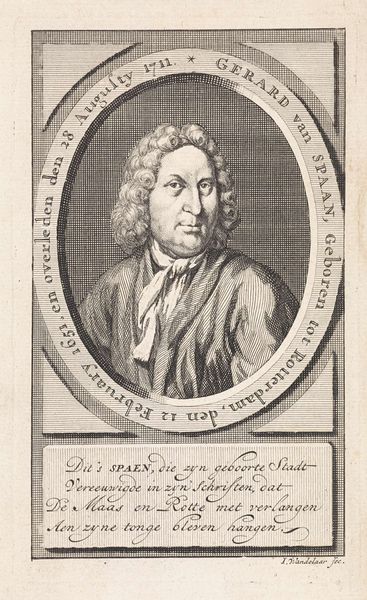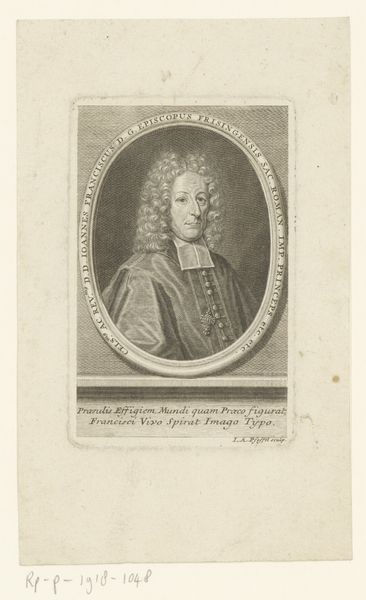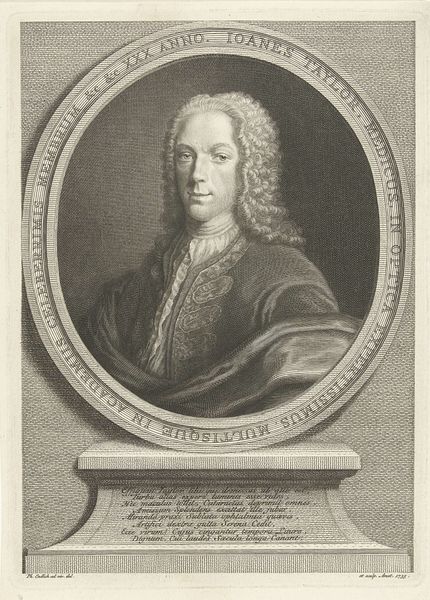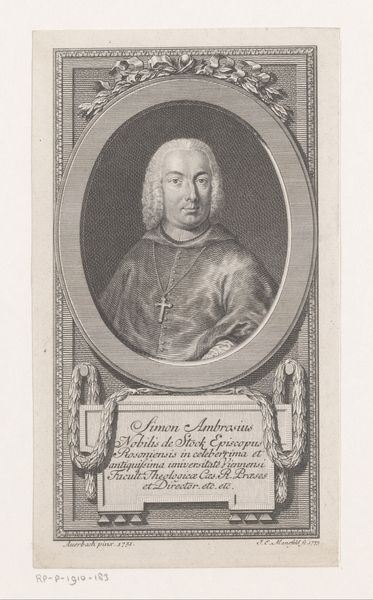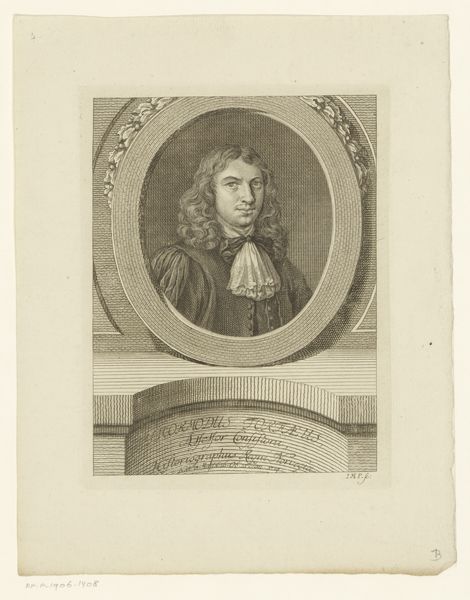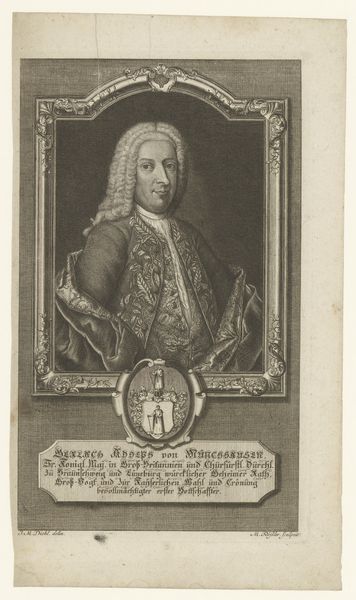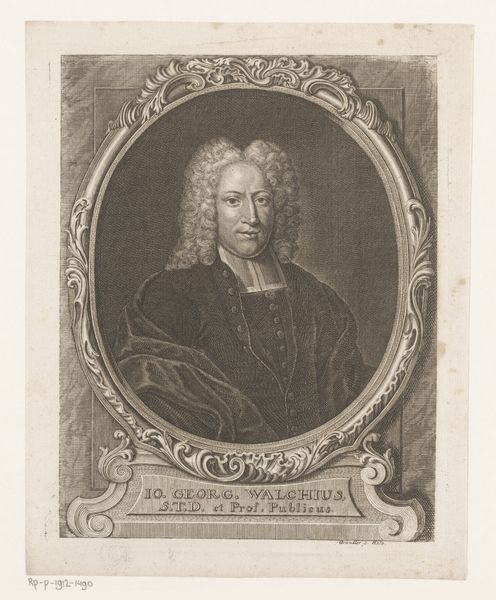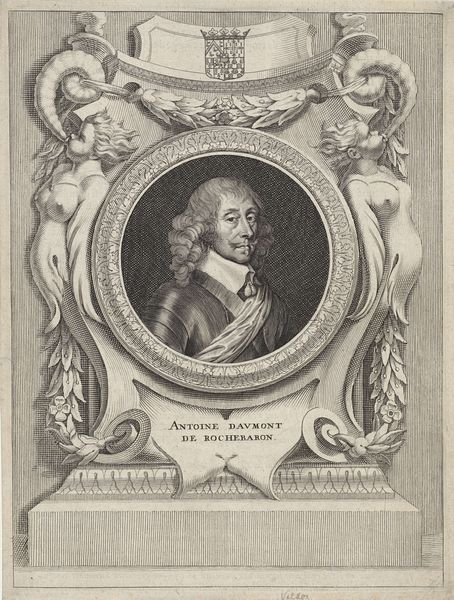
graphic-art, engraving
#
portrait
#
graphic-art
#
baroque
#
dutch-golden-age
#
old engraving style
#
engraving
Dimensions: height 158 mm, width 106 mm
Copyright: Rijks Museum: Open Domain
Curator: This engraving, crafted by Simon Fokke around 1750, presents a formal portrait of Nicolaas Lodewijk, Count Zinzendorff. The artwork is part of the Rijksmuseum's collection. Editor: It’s a rather stark image, isn't it? Very linear. All those finely etched lines; it’s almost like looking at a piece of lace crafted from metal. Gives a real sense of meticulousness. Curator: Absolutely. The piece demonstrates Fokke’s command over engraving, a key medium in disseminating images and ideas in the 18th century. As a portrait, it was probably intended to promote Zinzendorff, depicting him with gravity and presence to bolster his status and the image of the Moravian Church that he led. Editor: You can definitely see how the material context influenced its form and function. An engraving like this wouldn't have been cheap. It’s easy to imagine this reproduced for the elite circles he moved in. That meticulous detail translates to a specific kind of labor and its audience understood that, contributing to the reading of prestige. Curator: Indeed. Engravings like this circulated widely, solidifying the subject's image and reputation within intellectual and religious communities. Consider the strategic deployment of imagery during this period to shape public opinion and historical narrative. Zinzendorff is memorialized with text beneath, giving another layer of accessibility. Editor: And notice how Fokke renders the texture of the clothing. The weave is implied with such delicate marks; almost like capturing the haptic quality of the cloth through sheer artistry. It underscores the skill required, the slow burn of labor that converts simple copper and ink into something that communicates class, authority, and presence. Curator: Precisely. Fokke, though perhaps less celebrated today, played a critical role in disseminating visual information, thereby influencing the historical memory of figures like Zinzendorff. This print stands as an artifact of how image-making actively participated in the creation and projection of authority. Editor: Yes, and through considering its creation as a physical object of social and political utility, we gain insight into not just the figure portrayed, but the vast networks of production, consumption, and social positioning operating within it. Curator: Thinking about how this engraving operated as both an artwork and an instrument of social messaging, really shifts our perspective. Editor: Definitely. When you foreground those material and economic relations it shifts the picture—no pun intended!—quite significantly.
Comments
No comments
Be the first to comment and join the conversation on the ultimate creative platform.
